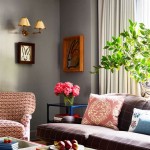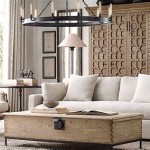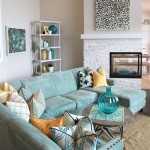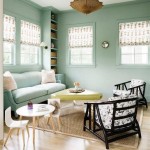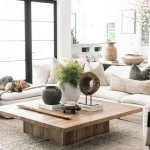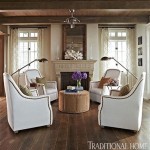Coastal Accent Chairs For Living Room: A Guide to Relaxed Elegance
Coastal design, with its emphasis on natural light, breezy fabrics, and a palette inspired by the sea and sand, has become a popular aesthetic for living rooms. A crucial element in achieving this look is the accent chair. Coastal accent chairs not only provide comfortable seating but also contribute significantly to the overall ambiance of a relaxed, yet sophisticated living space. This article explores the considerations when selecting coastal accent chairs, focusing on materials, styles, and placement within the living room environment.
The selection of a coastal accent chair extends beyond mere functionality. It is about capturing the essence of coastal living, bringing the serenity and tranquility of the seaside into the home. These chairs should complement existing furniture while adding texture, color, and personality to the room. The right accent chair can transform a space, making it feel more inviting, comfortable, and stylistically cohesive.
Key Considerations for Material Selection
Material choice is paramount when selecting coastal accent chairs. The material should be durable, comfortable, and visually aligned with the overall coastal theme. Natural materials and those that evoke a sense of the outdoors are often preferred.
Rattan and Wicker: Rattan and wicker are classic choices for coastal furniture. These materials offer a natural texture and a relaxed, bohemian vibe. Rattan is a vine-like plant that is often woven into intricate patterns, while wicker refers to the weaving process itself and can be made from a variety of materials, including rattan, willow, or synthetic fibers. Rattan and wicker chairs are lightweight, durable, and can be easily painted or stained to match the desired color scheme. When selecting rattan or wicker chairs, it is important to ensure that they are treated to withstand moisture, particularly if the living room is located in a humid climate.
Upholstered Fabrics: Upholstered chairs offer a greater degree of comfort and versatility in terms of design. Linen and cotton are popular fabric choices for coastal interiors due to their breathability and natural appearance. Linen, in particular, has a slightly textured look that adds visual interest. Opting for lighter colors such as white, beige, or light blue will further enhance the coastal theme. Performance fabrics, which are stain-resistant and easy to clean, are also a practical choice, especially in homes with children or pets. Consider incorporating subtle patterns inspired by the sea, such as stripes or geometric designs, to add a touch of visual flair.
Wood: Wood frames provide structural support and can contribute to the overall aesthetic of the chair. Light-colored woods, such as birch, maple, or whitewashed oak, are well-suited for coastal interiors. Driftwood finishes, which mimic the appearance of weathered wood found on beaches, are another popular option. Wood can be combined with upholstered elements for a balanced look, such as a wooden frame with a linen cushion. The type of wood and its finish should be carefully considered to ensure it complements the other furniture in the living room.
Exploring Coastal Chair Styles That Complement Your Home
The style of the accent chair should harmonize with the existing décor and contribute to the overall coastal aesthetic. There are several distinct styles that align well with coastal design principles.
Adirondack Chairs (Indoor): While traditionally outdoor furniture, Adirondack chairs can be adapted for indoor use with appropriate upholstery and paint finishes. The distinctive slatted back and angled seat provide a relaxed and comfortable seating experience. By using lighter wood stains or painting them in pastel colors, Adirondack chairs can bring a touch of coastal charm indoors. Cushions and throw pillows in nautical stripes or seashell patterns can further enhance the coastal theme.
Club Chairs: Club chairs, with their deep seats and comfortable armrests, are a classic choice for living rooms. These chairs can be adapted for coastal interiors by using light-colored upholstery such as linen or cotton. Details such as nailhead trim or tufted backs can add a touch of sophistication. Consider choosing club chairs with removable and washable slipcovers for easy maintenance.
Wingback Chairs: Wingback chairs, with their distinctive high backs and side wings, offer a sense of elegance and privacy. They can be incorporated into coastal interiors by using light and airy fabrics and avoiding overly ornate detailing. Wingback chairs upholstered in white linen or a subtle seashell pattern can create a refined yet relaxed coastal look. The height of the wingback chair can also add visual interest to the room.
Swivel Chairs: Swivel chairs offer added functionality and flexibility. These chairs are ideal for living rooms where conversation and interaction are encouraged. Swivel chairs can be upholstered in a variety of coastal-inspired fabrics and colors. Consider choosing a swivel chair with a low profile to maintain a sense of openness in the room.
Hanging Chairs: For a more relaxed and bohemian coastal vibe, consider incorporating a hanging chair. These chairs can be suspended from the ceiling or a stand and provide a comfortable and unique seating option. Hanging chairs made from rattan or macrame are particularly well-suited for coastal interiors. Adding cushions and throws in coastal colors and patterns can enhance the comfort and style of the hanging chair.
Strategic Placement and Integration into the Living Room Design
The placement of coastal accent chairs within the living room is crucial for achieving a balanced and harmonious design. Careful consideration should be given to the size of the room, the existing furniture arrangement, and the overall flow of traffic.
Creating Conversation Areas: Accent chairs can be used to create intimate conversation areas within the living room. Pairing two accent chairs opposite a sofa, or arranging them around a coffee table, can encourage interaction and create a sense of connection. The placement of the chairs should allow for comfortable conversation without obstructing pathways.
Adding Visual Interest: Accent chairs can be strategically placed to add visual interest to the room. A single accent chair in a bold color or pattern can serve as a focal point. Alternatively, a pair of matching accent chairs can create a sense of symmetry and balance. Consider placing an accent chair near a window to take advantage of natural light and create a cozy reading nook.
Balancing Scale and Proportion: The size and scale of the accent chair should be proportionate to the size of the room and the other furniture. A large, bulky accent chair may overwhelm a small living room, while a small, delicate chair may get lost in a large space. Consider the height, width, and depth of the chair when making your selection. Using painter's tape to mark the dimensions of the chair on the floor can help visualize its placement.
Harmonizing with Color Palette: The color of the accent chair should complement the overall color palette of the living room. Coastal interiors often feature a palette of blues, greens, whites, and neutrals. Consider choosing an accent chair in a contrasting color to add a pop of visual interest, or opt for a chair in a similar shade to create a more cohesive look. Throw pillows and blankets can be used to tie the accent chair into the overall color scheme.
Integrating with Accessories: Accessories play a key role in completing the coastal look. Throw pillows, blankets, and rugs in coastal-inspired patterns and textures can be used to complement the accent chair. Consider incorporating natural elements such as seashells, driftwood, and coral to further enhance the coastal theme. Artwork featuring seascapes or nautical motifs can also add to the overall ambiance.
Ultimately, selecting coastal accent chairs for the living room is an exercise in blending comfort, style, and functionality. By carefully considering the materials, styles, and placement of these chairs, one can transform a living space into a tranquil and inviting coastal retreat.
In order to ensure comfort, consider sit-testing chairs before making a purchase. This allows for an assessment of seat depth, back support, and armrest height. Online reviews can also provide insights into the comfort levels reported by other users.
The longevity of the chair is directly influenced by the quality of its construction. Evaluating the frame material and joinery methods can help assess the chair's durability. Solid wood frames and reinforced joints indicate a higher level of craftsmanship and potential lifespan.
Budget considerations are essential in the selection process. Accent chairs can vary widely in price, and setting a budget beforehand will help narrow down the options. Consider whether to prioritize affordability or invest in higher-quality materials that will last longer and better withstand daily use.

Coastal Upholstered Accent Chairs Sea Life Motifs Patterns

Accent Chair Ideas Coastal Living Designs Styles

Escape Coastal Living Home Collection Pebble Accent Chair By Universal Furniture Lounge Chairs Univ 833839 France Son

Ijeasm

Coastal Living Room Chairs Life On Virginia Street

Coastal Style Living Room 2025 Chairs

Coastal Living Miramar Accent Chair Regina Andrew Detroit

Blue Striped Upholstered Accent Chairs Idea For Coastal Living

Beach Themed Top Accent Chairs

Modern Coastal Living Room Chairs Life On Virginia Street



